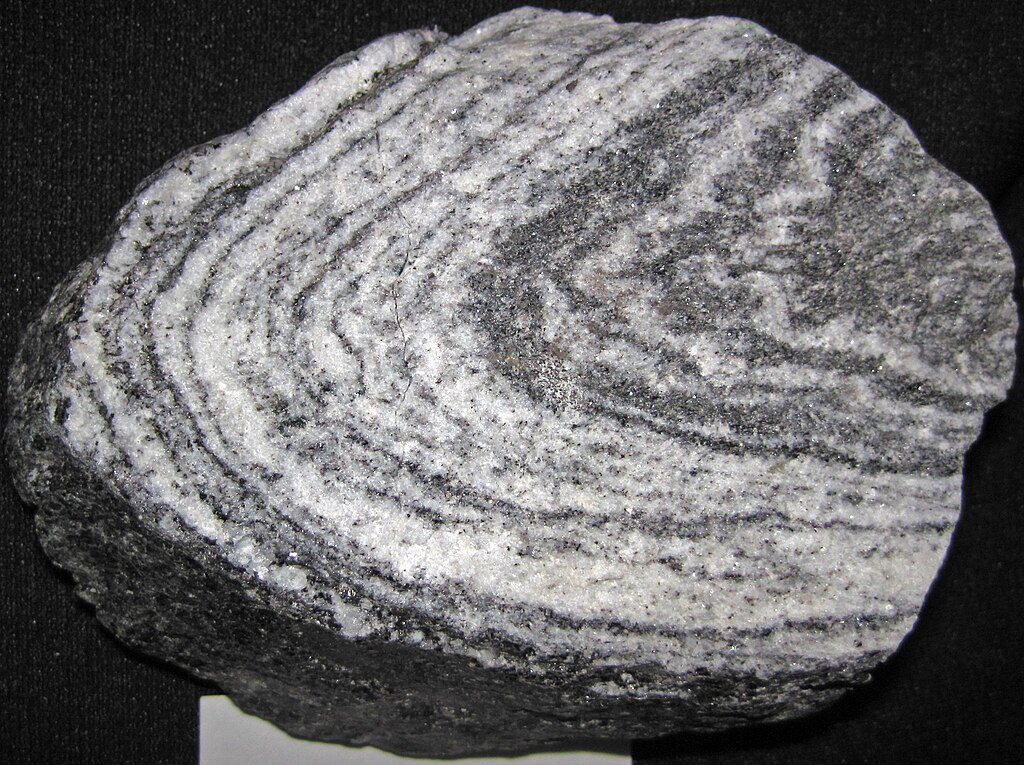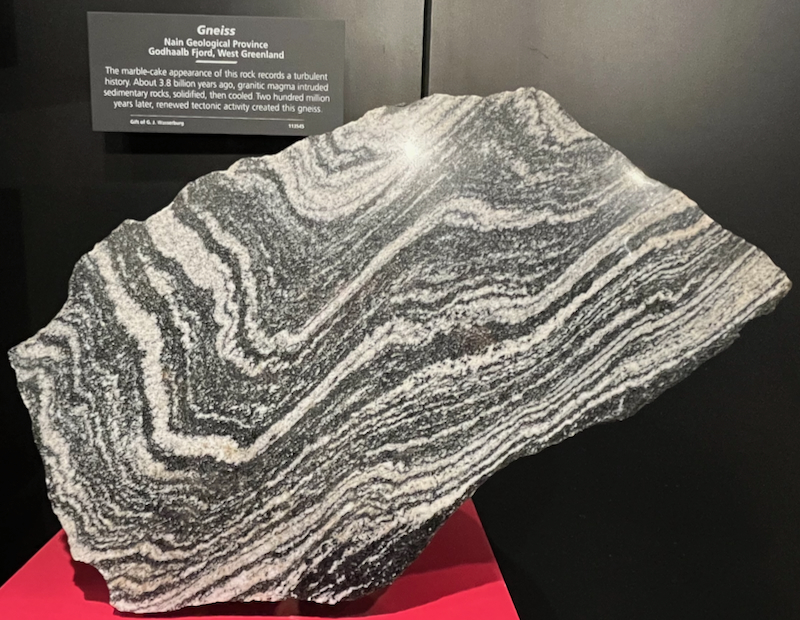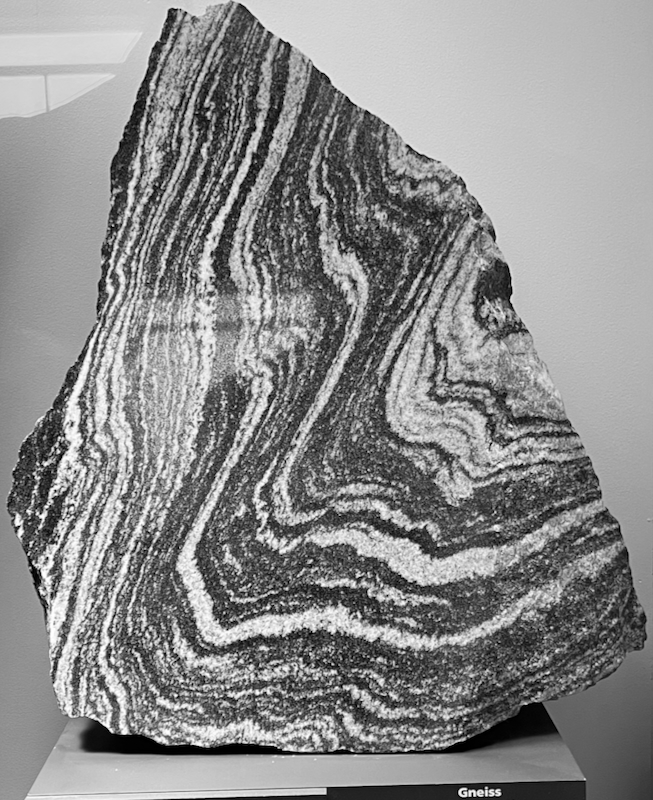Gneiss
Some rock names are dangerous because you know that geologists are going to use them to make bad jokes. Gneiss (pronounced the same as “nice”) is one of the most dangerous! Fortunately, if you ignore the name, the rock itself is not too bad. It’s a fairly hard metamorphic rock that’s formed under high heat and high pressure, and it can contain ingredients from igneous rocks like granite or sedimentary rocks like schist. (Note that schist has a similar bad joke warning.) One way to identify gneiss is that it usually shows bands of different colors—mostly gray, white, black, maybe a little brown—and it can be folded, where it looks like the whole rock bent, and the bands bent with it, sometimes in wavy patterns. The bands are usually made of different minerals, with the light bands being mostly feldspar and quartz, and the dark ones being biotite mica, augite (just like diabase), and hornblende. In case you wanted to know, if gneiss comes from igneous rock, it’s called orthogneiss, but if it comes from sedimentary rock, it’s called paragneiss. Now that’s a useful fact! Just kidding.
| Formula | Group or Type | Shape | Hardness | Specific Gravity | Streak | Luster |
|---|---|---|---|---|---|---|
| — | — | — | 5–7 | 2.5–2.7 | — | — |


